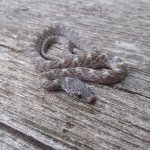67temp
New member
I’m scratching my head trying to figure out some of these babies. Pairing was a caramel, sunkissed, diffused Miami het cinder X caramel, sunkissed het diffused 50%ph cinder. So all babies are at least visual caramel and sunkissed. My initial thoughts are caramel, sunkissed, diffused Miami het cinder and caramel, sunkissed Miami het cinder, diffused.
What is throwing me off is the caramel shatter listing on ians looks nothing like the caramel shatters I have produced but more like the ones that are het cinder. I also see several listed as “shatters” on morph market that don’t really look like shatters to me and I would be tempted to call them as het cinder. Are there different grades of shatters or are other people mis-interpreting het cinder for a visual cinder? The one shown on ians I would personally label as caramel sunkissed het cinder.
http://iansvivarium.com/morphs/?m=caramel_shatter
https://www.morphmarket.com/us/c/reptiles/colubrids/corn-snakes/365743
What is throwing me off is the caramel shatter listing on ians looks nothing like the caramel shatters I have produced but more like the ones that are het cinder. I also see several listed as “shatters” on morph market that don’t really look like shatters to me and I would be tempted to call them as het cinder. Are there different grades of shatters or are other people mis-interpreting het cinder for a visual cinder? The one shown on ians I would personally label as caramel sunkissed het cinder.
http://iansvivarium.com/morphs/?m=caramel_shatter
https://www.morphmarket.com/us/c/reptiles/colubrids/corn-snakes/365743








